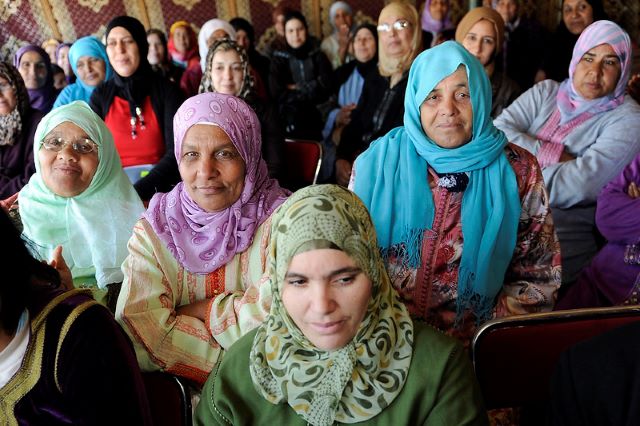The Gender Wage Gap in Morocco
 In 2015, the women’s labor force participation rate in Morocco stood at 26%, among the lowest in the world. This percentage had not evolved since 1990, and in 2020, it had decreased to a low point of 23.1%. This data confirms the findings of the 2022 report from the High Commission for Planning (HCP), the body responsible for producing official statistics in Morocco, showing that “[eight] out of 10 women in the country remain outside the labor market.” The HCP also published a report on multidimensional women’s poverty in Morocco measuring four dimensions: education, health, economic activity and living conditions. It showed an improvement in the incidence of multidimensional poverty among women aged 18 and over with a 2021 national level of 16.5% versus 18.1% in 2014. However, it also found that COVID-19 had set the country back six years in terms of efforts to fight female poverty. On top of this, the gender wage gap in Morocco is still significant.
In 2015, the women’s labor force participation rate in Morocco stood at 26%, among the lowest in the world. This percentage had not evolved since 1990, and in 2020, it had decreased to a low point of 23.1%. This data confirms the findings of the 2022 report from the High Commission for Planning (HCP), the body responsible for producing official statistics in Morocco, showing that “[eight] out of 10 women in the country remain outside the labor market.” The HCP also published a report on multidimensional women’s poverty in Morocco measuring four dimensions: education, health, economic activity and living conditions. It showed an improvement in the incidence of multidimensional poverty among women aged 18 and over with a 2021 national level of 16.5% versus 18.1% in 2014. However, it also found that COVID-19 had set the country back six years in terms of efforts to fight female poverty. On top of this, the gender wage gap in Morocco is still significant.
The COVID-19 Pandemic and Society Norms
The conditions for working women indeed worsened with the COVID-19 pandemic as women held most of the jobs in impacted sectors and the informal economy, leading to a loss of income and employment.
Societal gender norms dictate that females shoulder the burden of childcare and housework. For women who do develop ambitions, the lack of childcare support facilities and traditional societal norms often stop them from following these ambitions, expecting them to sustain the bulk of the domestic burden. U.N. Women data indeed shows that women and girls aged 15+ spend on average 20.8% of their time on unpaid domestic chores and care work compared to less than 3% for men.
Marital-Status Gap
The World Bank’s 2015 report on the societal benefits of empowering women revealed a stark “marital-status gap” — the “relative difference in labor force participation between married and never-married women.” This gap goes up to 70% in Morocco, suggesting that most women who enter the workforce, exit it after marriage. This is primarily a result of the profoundly entrenched gender roles in Moroccan society as married women shoulder even more of the domestic burden than unmarried women.
Women are overrepresented in informal employment with 65% of women working in precarious labor or unpaid employment compared to 37% of men, according to USAID. Women also reap lower returns for their work with a gender wage gap of up to 77%. In rural areas, 96% of women with low levels of education work in basic-level farming while in urban areas women with secondary education seldom join the labor force as their access to “suitable jobs” is limited, according to the World Bank.
Steps Forward
Though data to monitor a positive evolution is lacking, Morocco has shown a willingness to follow “various conventions, declarations, recommendations and resolutions concerning women’s rights” that the U.N. introduced. In the early 2000s, the U.N. pointed out that Morocco has strengthened its gender equality-related legal framework, institutionalizing equality and parity as constitutional values and adopting a set of laws and reforms as well as an integrated public policy for equality and programs for the promotion of women’s rights. However, these reform efforts have often taken place in a complex political climate that sometimes opposes a reform agenda to support women’s economic empowerment.
For these gender equality and women empowerment initiatives to be effective, Morocco will need to implement them in a systemic way. Since 1985, the Democratic Association of Moroccan Women (ADFM) has made significant achievements by partnering with other women’s associations to advance women’s rights in the region. ADFM has among else campaigned to reform the Moroccan social security system, promoting debates aimed at protecting vulnerable women workers by ensuring systemic gender equality, which will reduce the gender wage gap in Morocco, among other benefits.
The Future
In the 2021 World Economic Forum’s Global Gender Gap Index, Morocco ranked 140th out of 149 countries. Due to tradition and social norms, only a very small share of Moroccan women work and those who do work face high inequalities when it comes to employment access and remuneration. However, initiatives implemented over the past decade look to evolve the societal mindset and align the Moroccan legal framework with the United Nations Sustainable Development Goals, specifically gender equality.
It is worth noting that empowering women, encouraging them to join the workforce and reducing the gender wage gap in Morocco is not only just but also economically wise. The OECD found in 2020 that if women played an “identical role in labor markets as men,” the Middle East and North Africa (MENA) regions could see substantial macroeconomic gains with a boost of up to 47% to their gross domestic product (GDP).
– Hanna Bernard
Photo: Flickr
